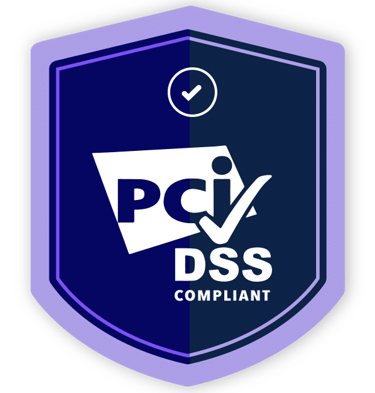Top Marketing Mistakes Hospice Agencies Make—and How to Fix Them
Discover the most common marketing mistakes hospice agencies make and learn practical strategies to fix them. Improve outreach, build trust, and grow your hospice with effective, ethical marketing.
Marketing a hospice agency is not like marketing any other healthcare service. Families searching for hospice are often in a vulnerable state, looking for guidance, compassion, and trust—not flashy sales tactics. Unfortunately, many hospice providers unintentionally fall into marketing traps that hurt their reputation, limit their visibility, and make it harder to reach those who truly need their care.
In this article, we’ll explore the top marketing mistakes hospice agencies make—and how to fix them. By avoiding these pitfalls, your hospice can build stronger community trust, increase referrals, and position itself as the provider of choice in your area.
Mistake #1: Focusing on Services Instead of Families’ Needs
Many hospice agencies fill their websites and brochures with long lists of services—“skilled nursing,” “medication management,” “24/7 care availability.” While these are important, they don’t immediately connect with families who are in emotional crisis.
Why this is a mistake:
Families want to know how you will support them through this difficult journey, not just what you offer. Leading with clinical jargon can feel cold and impersonal.
How to fix it:
Shift messaging from “what we do” to “how we help.” Instead of saying “We provide pain management,” say “We help your loved one remain comfortable and dignified at home.”
Use compassionate language that acknowledges the emotional side of end-of-life care.
Include real stories, testimonials, and examples of how families felt supported.
Pro tip: Run a quick test. Ask someone outside the healthcare field to read your homepage. If their reaction is “I don’t know how this helps me,” you need more family-centered language.
Mistake #2: Ignoring Online Presence
Many hospice agencies still rely heavily on physician referrals and word of mouth. While referrals are crucial, ignoring your online presence means missing out on families who go straight to Google when they hear the word “hospice.”
Why this is a mistake:
77% of patients search online before selecting a healthcare provider.
A weak or outdated website can make families question your professionalism.
Without visibility in local searches, your competitors will capture families first.
How to fix it:
Invest in a professional, mobile-friendly website with clear navigation.
Claim and optimize your Google Business Profile so your agency appears in local searches.
Post regularly on social media platforms like Facebook, which is widely used by family caregivers.
Use SEO strategies: incorporate keywords like “hospice care near me,” “end-of-life support,” and your city/region.
Mistake #3: Overlooking Community Outreach
Hospice is deeply local. Yet many agencies neglect community presence, assuming doctors or hospitals will handle referrals.
Why this is a mistake:
Families often ask friends, faith leaders, or local organizations for recommendations before calling a provider.
If your agency isn’t visible in community settings, you risk being forgotten.
How to fix it:
Build partnerships with churches, senior centers, and community nonprofits.
Host educational events on topics like “What Hospice Really Means” or “Caring for a Loved One at Home.”
Sponsor community activities to increase visibility without aggressive sales.
Encourage staff to participate in local volunteer or advocacy work.
Mistake #4: Treating Marketing Like a One-Time Task
Some hospice agencies create a brochure or launch a website once and consider marketing “done.” But marketing is an ongoing process.
Why this is a mistake:
Online information changes quickly, and families notice outdated details.
Competitors update their content regularly, making your agency look less active.
Families searching for hospice want reassurance that you are accessible, reliable, and current.
How to fix it:
Create a marketing plan that includes monthly updates to your website and social media.
Share seasonal or timely content (e.g., caregiver support tips for the holidays).
Review referral data quarterly to adjust outreach efforts.
Set aside a modest but consistent marketing budget to keep efforts going.
Mistake #5: Neglecting Staff as Brand Ambassadors
Hospice care is only as strong as the team behind it. Yet many agencies fail to involve staff in marketing and reputation building.
Why this is a mistake:
Staff often have the most authentic stories to share about the care they provide.
Families’ experiences with staff directly affect online reviews and referrals.
Employees who feel undervalued won’t advocate for your agency in the community.
How to fix it:
Train staff on how to communicate your hospice’s mission and values.
Encourage them to share stories (with HIPAA compliance in mind) that show compassion and connection.
Highlight staff on your website and social media to humanize your agency.
Celebrate milestones, anniversaries, and achievements to build pride and visibility.
Mistake #6: Failing to Educate Families About Hospice
One of the biggest challenges in hospice marketing is misinformation. Many families believe hospice is only for the last few days of life, or that choosing hospice means “giving up.” If your marketing doesn’t address these myths, families may delay care until it’s too late.
Why this is a mistake:
Late hospice admissions mean less time to provide meaningful support.
Families may choose a competitor who educates them better.
Lack of education reduces trust in your agency.
How to fix it:
Create blog posts, videos, and FAQs explaining hospice eligibility, services, and benefits.
Use simple, reassuring language—avoid medical jargon.
Host free webinars or workshops for caregivers and healthcare partners.
Share myth-busting posts on social media, such as “Hospice is not about giving up—it’s about living with dignity.”
Mistake #7: Ignoring Online Reviews and Reputation
Online reviews are the modern version of word-of-mouth. Ignoring or neglecting them can harm your agency’s credibility.
Why this is a mistake:
Families trust reviews almost as much as personal recommendations.
Negative reviews without a response suggest you don’t care.
Even great service can go unnoticed if no one shares feedback.
How to fix it:
Monitor platforms like Google, Yelp, and Caring.com for reviews.
Encourage satisfied families to leave honest feedback.
Respond promptly and compassionately to all reviews—especially negative ones.
Use reviews in your marketing by showcasing testimonials on your website.
Mistake #8: Overpromising in Marketing Messages
Some agencies unintentionally promise “miracle results” or oversimplify what hospice can do. While well-meaning, this creates unrealistic expectations.
Why this is a mistake:
Families may feel misled if reality doesn’t match promises.
Overpromising can lead to complaints, poor reviews, and compliance risks.
Trust is fragile—once lost, it’s nearly impossible to regain.
How to fix it:
Be transparent and compassionate in all messaging.
Highlight what families can expect: comfort, dignity, emotional support, and expert care.
Balance hope with honesty—acknowledge that hospice supports families through difficult realities.
Mistake #9: Underutilizing Data and Analytics
Marketing without tracking results is like sailing without a compass. Many hospices don’t analyze what works and what doesn’t.
Why this is a mistake:
Wasted time and money on ineffective strategies.
Missed opportunities to improve outreach.
Inability to measure ROI or adjust campaigns.
How to fix it:
Track website traffic using free tools like Google Analytics.
Monitor referral sources: are families finding you online, through doctors, or community events?
Use social media insights to see which posts resonate most.
Adjust your strategy based on data, not guesswork.
Mistake #10: Forgetting the Human Touch
Finally, the biggest marketing mistake of all: treating hospice like a product to sell instead of a mission to share. Hospice care is about people, compassion, and dignity—not numbers.
Why this is a mistake:
Overly “salesy” marketing feels inappropriate and insensitive.
Families can sense when messaging is profit-driven rather than care-driven.
Hospice must always be about trust and heart.
How to fix it:
Make your mission and values the centerpiece of your marketing.
Use authentic, heartfelt stories instead of scripted corporate language.
Train your team to see every interaction—online or offline—as part of your marketing.
Remember: marketing is not just about gaining patients; it’s about building trust in your community.
Conclusion
Hospice marketing requires a delicate balance of compassion, transparency, and professionalism. By avoiding these common mistakes and implementing thoughtful fixes, your agency can stand out in a crowded market while staying true to its mission of care.
The key takeaways:
Speak to families’ needs, not just your services.
Invest in online presence and community visibility.
Educate, don’t just advertise.
Build trust through transparency and authenticity.
Hospice care is one of the most important services a family may ever choose. By marketing with integrity and compassion, your agency ensures more families find the support they desperately need.







